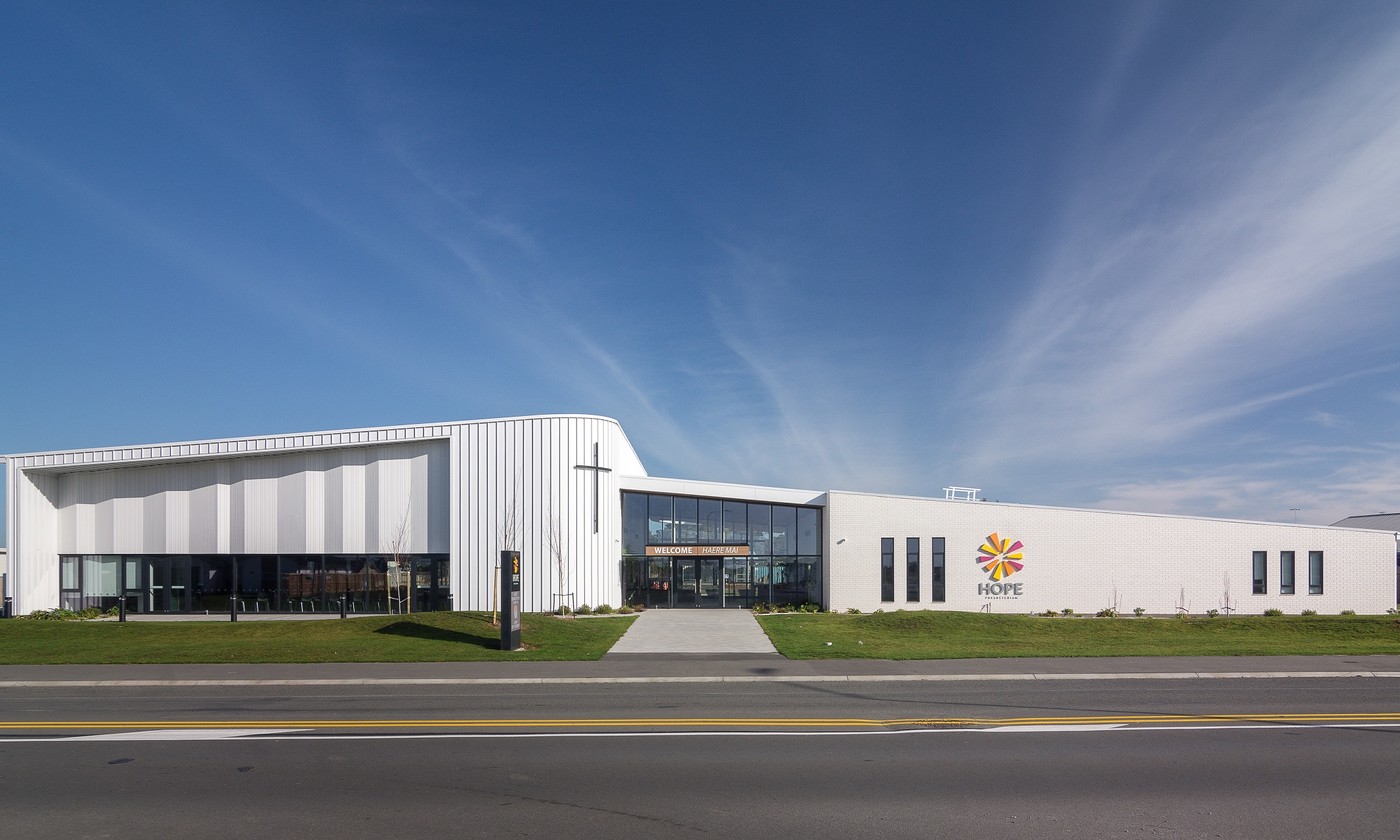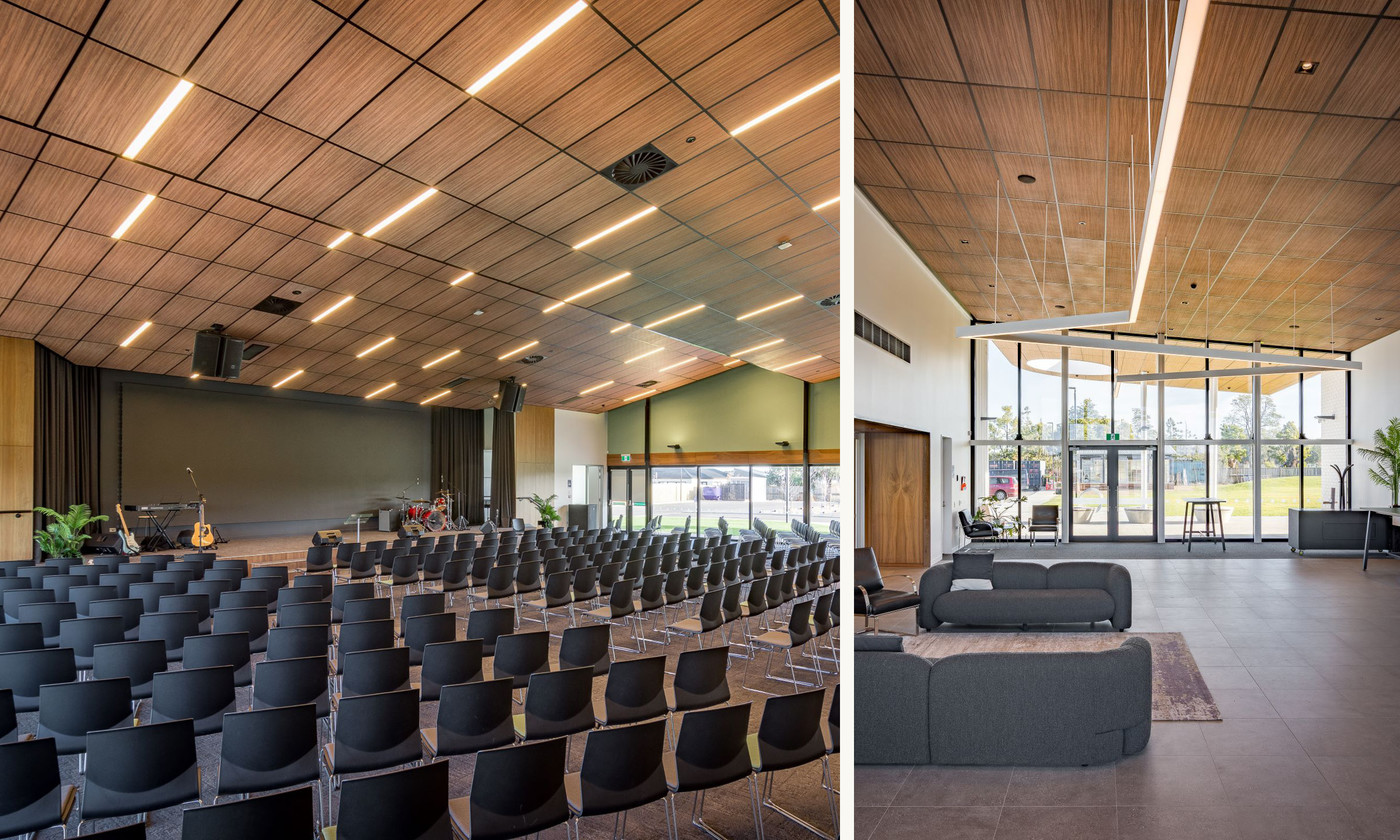For 28 years our focus has always been on enriching the way people live, work and play through architecture.
Avenues
Building Hope
July 2024
For the Hope Presbyterian congregation in Rolleston, Dalman Architects’ brief was simple: build a functional space that meets the needs of an active and growing community.
Dalman’s Richard Dalman explains the buildings: “They required a worship hall. That was the most important space in the development, so we wanted to give it some presence. Along with the 400-seat worship hall, they needed a space to congregate after church and several other ancillary spaces, such as the lounge, offices, and kitchen.”
The project also had a tight budget. The resulting design simply splits the building’s functions across two sides, one side housing the worship hall and the other housing the ancillary spaces. Between these, a large foyer serves as a central congregation space, which also provides access to the building with considerable design flair.
The need for access from two opposing directions resulted in the large, naturally lit main entrance foyer, which is fully glazed at both ends – first to the street for people walking in and second to the rear for people coming by car – effectively creating two front entrances.
“We’ve tried to make each of those entrances feel welcoming in equal amounts. The main foyer doubles as a congregation space after church and a function space in its own right,” Richard says.
“So, when you enter the foyer, you can pause and be welcomed, then turn one way into the worship hall church or the other way into the rest of the building.”
The entrances and glazed central foyer were critical to the overall aesthetics of the building, providing visibility into the heart of the building and linking the main solid building forms on either side.
“They [Hope Presbyterian] wanted a really generous connection between the worship hall and the adjacent central foyer space so that they can break out to that space in large numbers and have a good relationship between those two primary spaces,” Dalman Architects Associate, Ross Sweetman says.
“The underside of the foyer roof also extends from inside to outside. We’ve got timber-look ceiling tiles inside and matching panelling on the exterior soffit. So, it gives a sense of the indoor foyer extending to the exterior, towards the car park. You can see the timber running all the way through as you arrive and approach the glazed façade, so it feels like the foyer also extends outwards, creating a welcoming invitation to come in,” Ross says.
Brad Austin, director of Bushnell Builders, says this was one of the more satisfying end results of the build.
“There were many challenges to ensure the area flowed internally and externally, such as matching the timber grain ceiling panels from inside to outside. These details are very challenging, but step by step, we worked through the details in depth with Dalman, and the result is spectacular.”
To make the church’s money go as far as possible, the majority of the space was kept functional with attention paid to finer details.
“Inside, we have focused on providing better finishes in the worship hall, where they are appreciated by more people at once, and there are higher performance requirements. In the smaller spaces, which are in the support spaces, we used simple, more economical materials,” Ross says.
White brick and metal cladding systems and a large overhanging canopy, complete with an architectural ‘oculus’ looking skyward, give the exterior movement and life, while a simple roof geometry helped keep costs for the building envelope in check.
Richard adds, “The form of the church itself is just a basic rectangle, which is the cheapest way to build with a simple structure. By carving out the two walls to the road and to the car park behind, we’ve created more of a sculptural façade in a simple, cost-effective way.”
With the first service scheduled for late 2023, Brad says it was important that the team worked towards on-time completion and that the building functioned as intended, “from the audio and visual to acoustics and aesthetics.”
As a newly built church that needs to be versatile, you won’t find transparent hymn sheets being slipped onto an overhead projector; instead, the worship hall is designed as an auditorium with a nine-metre video screen on the back wall of the stage and amplified music capability.
Dalman Architects also designed the North Methodist Church Chapel Street Centre and the Salvation Army Church of Christchurch City. Richard says they were both designed with the community in mind.
“They’re not just used on a Sunday; they’re used on every single day of the week.”
Words: Liam Stretch
Images: Mick Stephenson



